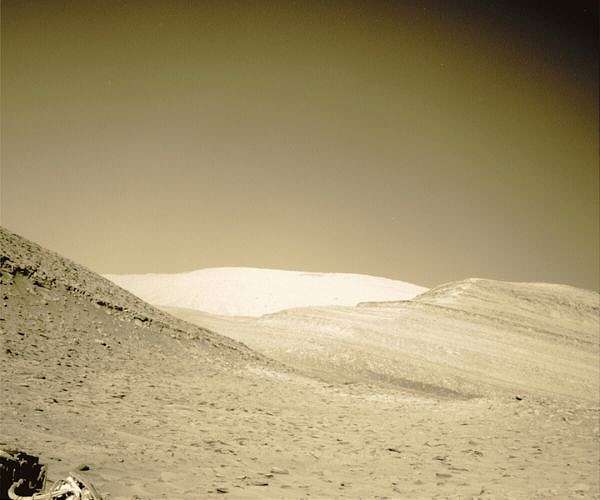21.05.2023

This image was taken by Right Navigation Camera onboard NASA's Mars rover Curiosity on Sol 3827. Credits: NASA/JPL-Caltech.
Earth planning date: Wednesday, May 17, 2023. As I'm writing this, it's about 8:30 pm on sol 3831 in Gale crater: ~16 hours after our SAM instrument ran its EGA experiment (which Abigail described so clearly in yesterday's blog!).
While we were able to confirm the success of the Ubajara drill sample drop-off to SAM and the start of the EGA, our first communication with Earth after the EGA completed was delayed from a ground-based issue. Luckily, our downlink lead assured us that the data would be available later this evening so the SAM team can still assess the results before Friday's next planning session. So for now, we're still in a planning holding pattern until SAM decides if the Ubajara drill sample is tasty enough for further analysis.
My primary role in this mission is to operate the science cameras (Mastcam, MAHLI, MARDI), and drill sites usually provide more opportunities to watch our mission scientists analyze instrument results. Something I've noticed at Ubajara is that everyone's excited about the surrounding geological contacts and chemically-interesting veins/nodules in the bedrock around us.
We're also at a high vantage point of our traversed path, including Marker Band valley and its towering buttes like Deepdale, Bolivar, Amapa, and Chenapau - not to mention the crater rim shining through the fairly low atmospheric opacity (check out this Navcam 360 mosaic from last week)! All of this visible diversity means our remote science teams are eager to fill up the plan as much as our battery will let us.
For this two-sol plan we're starting off with a Mastcam multispectral of the Jardinopolis dark vein target ChemCam shot with LIBS on sol 3830 (here's the M100 image post-ChemCam LIBS). ChemCam is using their one-LIBS-per-sol on a bedrock target named "Les Trois Dents" (upper-left in this M100 image) and treating the clear atmosphere as an opportunity to get high-resolution imaging of the crater rim - supplementing Mastcam's most recent observation on sol 3830.
We'll fill the evening and night of sol 3832 with environmental data collection from RAD and REMS and pick up in the afternoon of sol 3833 with more Mastcam images of the atmosphere for tau measurements, the drill fines for measuring wind presence, and the ChemCam LIBS shots for color context.
ChemCam will shoot the same block we drilled on a target named "Madeira" for spectral diversity, and Navcam will take horizon movies to watch for any dust devils. We'll finish out the plan with more environmental measurements and another CheMin analysis of some Ubajara drill sample to see if chemistry results differ over time. Our next plan's fate now rests in the hands of the SAM team: to continue analyzing or wrap up this campaign and move on. We'll know for sure on Friday morning, so put in your guess now and check back to see if SAM agrees!
Quelle: SD
